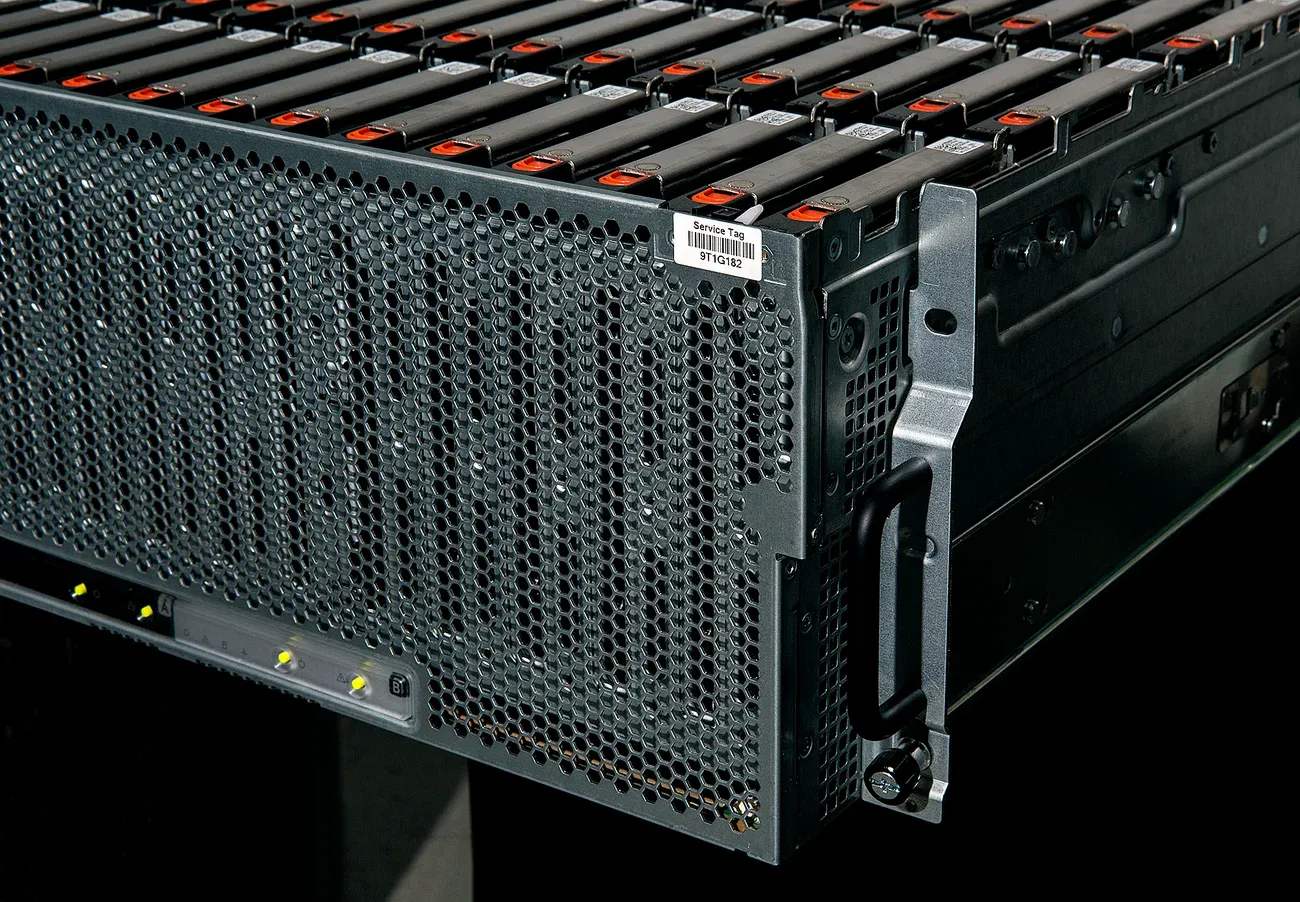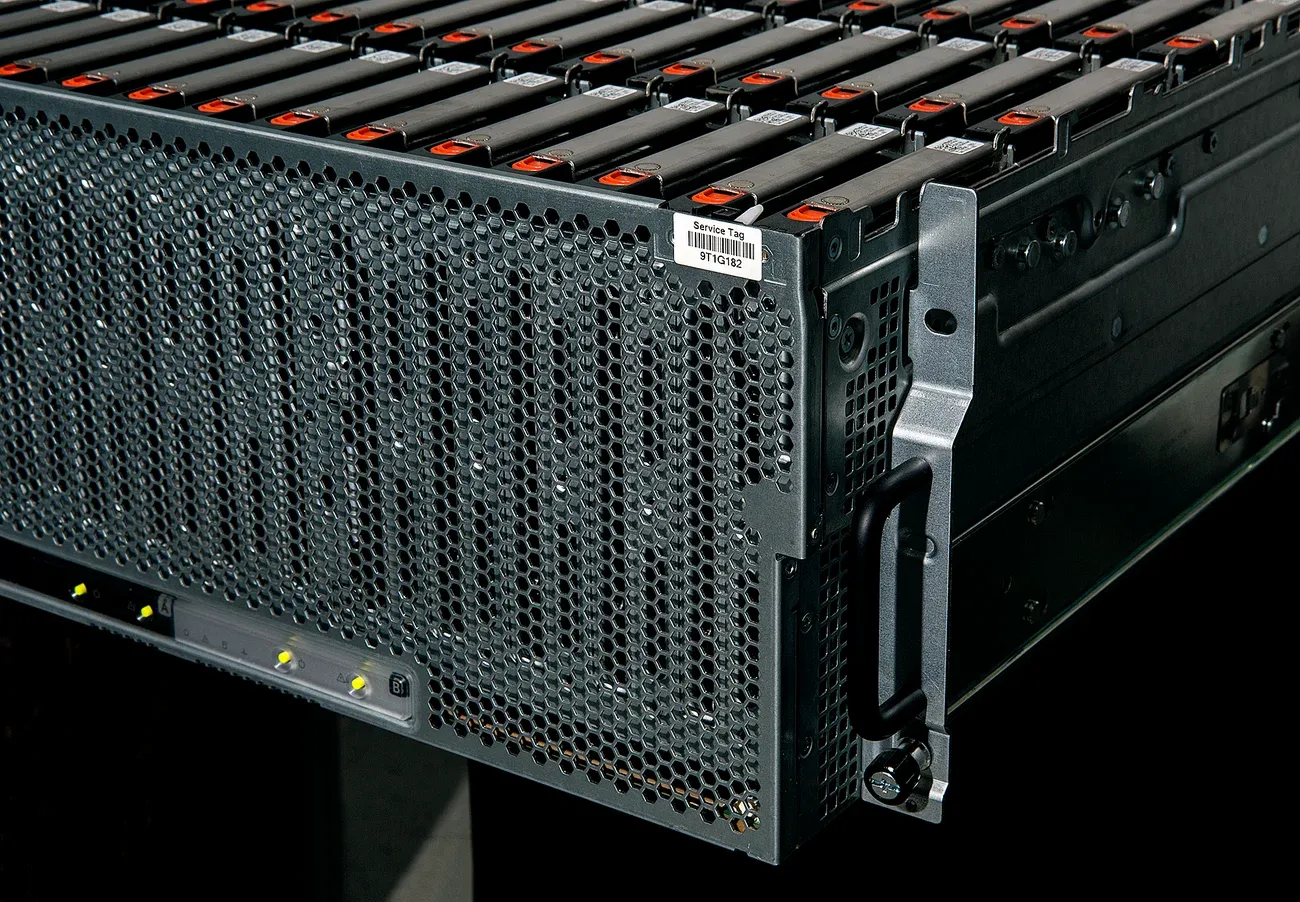I recently wrote a piece on why Facebook isn’t in the cloud business, which sparked a lively discussion on Hacker News. When I was writing the piece, however, one other company’s name kept on popping up in my head as another, perhaps more suitable entrant to the cloud market than Facebook: Dropbox.
Should Dropbox be in the cloud business and compete with AWS, Azure, GCP, etc.? (“Cloud business” here refers to infrastructure and/or platform-as-a-service (IaaS or PaaS), not software-as-a-service, which Dropbox is already in.)
Let’s take a look from five different dimensions, all of which are necessary to becoming a real player in the somewhat crowded but still fast-growing cloud industry:
- Core Technology
- Product Differentiation
- Enterprise Talent
- Business Imperative
- Political Will
(In this post, I’ll focus on “core technology” and “production differentiation”, and discuss the other three dimensions in Part 2 of this topic.)
Core Technology
Dropbox’s technical chop is well-known and well-respected in the industry, punctuated by its impressive build-and-migrate project from AWS to its own private cloud, while still serving hundreds of millions of users. The whole process took about 2.5 years, which happened roughly between 2013-2016. It involved everything from physically building new data centers, to custom-designing servers, to building a brand new distributed storage software layer using two fairly new programming languages (first Go, then Rust).
The story is well-documented in this Wired article, which is an enjoyable read, because it’s both interesting on a technical level and dramatically told. While most of the subsequent headlines focused on its cost saving of almost $75 million USD over two years since the migration’s completion, the more interesting long-term business implication is this:
Dropbox knows how to build a custom cloud on a deadline, and migrate a massive amount (as in hundreds of petabytes) of data without service disruption.
Logistical experiences matter almost as much as technical ones. I believe one of the primary reasons AWS is the market leader by a mile is because it’s the logistics leader of the bunch, even though its technology is not as advanced or polished as say Google’s. AWS knows how to move stuff around at scale, efficiently and reliably; that’s no easy feat. The learning gained from shipping, delivery, and building warehouses at scale to support an e-commerce empire seems to translate well to building a cloud business. A lot of the fundamentals has to do with migration or “lift and shift” of data and customer workloads without causing service interruptions, or delivering a private cloud custom-built for a big customer on time.

Dropbox has lived through plenty of logistical hurdles, it seems, in its own race against time to drop its AWS contracts. At one point:
“[Dropbox] was installing forty to fifty racks of hardware a day, each rack holding about eight individual machines. At one point, they were slowed by some ill-timed crashes—and not the computer kind. In one twenty-four hour period, trucks carrying machines to Dropbox data centers in different parts of the country both had accidents.”
Dropbox is also notably pragmatic in that after it completed its own cloud and migration efforts, it still kept a small amount of AWS footprint in its infrastructure. Based on its most recent SEC 10K filing for FY2019, Dropbox has workloads in AWS data centers in “the United States, Australia, Europe, and Japan, which allows [Dropbox] to localize where content is stored.” This hybrid setup serves two purposes: (1) extra redundancy backing up its own cloud in the U.S. for its primary market; (2) allow international expansion into new markets while abiding by local laws and regulations with regard to data location and privacy (e.g. GDPR) by leveraging AWS, until growth in these new markets is stabilizing or predictable. In general, building your own cloud only makes sense if you are big enough and growth is forecastable enough that you can calculate the cost-benefit tradeoffs spanning multiple years. Dropbox reached that level in the U.S.; it has yet to do so in other markets.
Through all these experiences, Dropbox has inadvertently developed expertise in the entire gamut of the cloud business: operating a cloud to serve its SaaS products (“public cloud”), building its own cloud (“private cloud”), and running a mixture of workloads between its own infrastructure and AWS (“hybrid cloud”).
So on a technical, operational, and logistical level, Dropbox is well-positioned to build and deliver cloud services in many scenarios, as well as any of the current incumbents.
Product Differentiation
Of course, being able to compete just on the basics is not enough in a maturing cloud market. You need differentiation in your product. Where can Dropbox differentiate?
Dropbox’s origin as a consumer tech company could be an overarching product differentiator, if leveraged correctly. What fueled Dropbox’s rapid growth up until this point was its “just-work” user experience, allowing anyone to store and sync files in the cloud with zero technical expertise. Its track record in making successful consumer products dove-tails well with another industry trend: the consumerization of enterprise technology.
We are seeing this trend unfold on the application layer with Zoom, Slack, GSuite, Atlassian, and Microsoft’s suite of workplace products. Dropbox’s own recently-launched workplace collaboration application, Spaces, is playing into this too. But this “consumerization” trend isn’t stopping at the application layer, where most of the end users are still non-technical. It’s also moving into the developer layer, with GitHub launching its own mobile app and GitLab offering a similar portal via a third-party partner. There are many other younger startups popping up in the developer tool space, aiming to provide a consumer-grade experience with user-friendly workflow, low-code, or no-code.
By and large, most cloud platforms do not score well on their user experience; most of the consoles, dashboards, monitoring, etc. look like they are designed by machines for machines. The “consumerization” wave has yet to hit. Digital Ocean is probably the only vendor that has differentiated itself somewhat by its developer-friendliness, but it's a small player in the vast cloud world. This isn’t surprising. All cloud vendors begin quite literally from the ground up as an IaaS first, where it’s all about the machines: compute servers, storage units, network cables, VMs, etc. Some then move up the stack to become a platform-as-a-service (PaaS), with containerization and orchestration, managed databases, and other essential build blocks for developers to build applications. In short: they started with the machines then moved closer to humans. No wonder the user experience hasn’t been consumer-grade.
Dropbox is unique in that it began as a killer consumer SaaS application first, but it has also touched every part of building, migrating, and operating a cloud, which few SaaS companies have done. It has an opportunity to differentiate by building a PaaS offering, where the user experience of the tools, APIs, and services are more “consumerized” and friendly.
With Google Cloud’s $2.6 billion USD acquisition of Looker, a popular business intelligence analytics application, we are seeing signs that easy-to-use cloud application is strategically important for the big cloud vendors to “land grab” and gain market share.
It’s unlikely that Dropbox itself would be an acquisition target along the same vein, since it’s a public company that appears intent on staying independent. Dropbox is evolving into an enterprise software company, because that’s where the big contracts are, so we know its infrastructure will have to be enterprise-grade. The “consumerization” of the cloud in terms of user or developer experience is still an open lane where a “Dropbox Cloud” could fill. And as the rise of Zoom has shown, no matter how crowded an industry is (and videoconferencing is very crowded), there’s always room for ease-of-use to stand out.
(For my thoughts on the other three dimensions -- enterprise talent, business imperative, political will -- please read Part 2 of this topic.)
If you like what you've read, please SUBSCRIBE to the Interconnected email list. New posts will be delivered to your inbox (twice per week). Follow and interact with me on: Twitter, LinkedIn.
Dropbox应该步入云业务吗?(第一部)
我最近写了一篇关于Facebook为什么不做云业务的文章,在Hacker News上引起了热论。在我写那篇文章的时候,其实有另一家公司的名字不断出现在我的脑海里,它也许比Facebook更适合步入云市场:Dropbox。
Dropbox是否应该涉足云业务,与AWS、Azure、GCP等厂商竞争呢?(先定义一下:“云业务”在这里指的是基础设施/或平台服务(IaaS or PaaS),而不是Dropbox已经介入的软件服务(SaaS)。)
让我们从五个不同的维度来看看,每一个都是想打造一个有竞争力的云业务的必需要素:
- 核心技术
- 产品差异化
- 企业客户人才
- 业务增长需求
- 高层意愿
(在这篇文章中,我主要讨论“核心技术”和“产品差异化”,关于其他三个方面的讨论请看本主题的第2篇文章。)
核心技术
Dropbox的技术水准在业界里是颇有名气的。尤其令人印象深刻的是它前几年构建了自己的私有云,在服务数亿用户的同时,从AWS把绝大部份的数据和负载量都迁移走了。整个过程历时约两年半年,大致发生在2013-2016年间。整个项目涉及了方方面面的工作,从构建新的数据中心,到自己定制设计服务器,再到使用两种蛮新的编程语言(先是Go,后是Rust)构建了一个全新的分布式存储层。
这个故事在这篇Wired文章中记录的很好,值得一读,因为它不仅在技术层面上有很多内容,整个故事的还讲得非常生动。虽然随后的大多数新闻都围绕在迁移后的两年里节省的近7500万美元的成本,但更值得注意的长期商业影响是:
Dropbox有定制建造一套云平台的能力,并能在不中断服务的情况下迁移大量(数百PB)数据。
在云计算行业里,后勤运维经验几乎和技术能力一样重要。我认为,AWS能成为市场领先者的主要原因之一,是因为它的物流运维能力极强,尽管它的技术没有像谷歌的那么先进或完善。AWS知道如何以高效、可靠地方式大规模的搬东西,这不是件容易的事。从运输、交付和大规模建造仓库以支持自己的电商帝国所获得的经验,似乎可以很好地转化到云业务。很多基本业务元素都是在不中断服务的情况下,不断的迁移客户的数据和流量负载,或是按时为大客户定制提供一个私有云平台。

Dropbox在与时间赛跑从而解除与AWS的合同的过程中,经历了许多奇葩的后勤障碍。有一次:
“[Dropbox]每天安装40到50台硬件机架,每个机架容纳大约8台单机服务器。有一次,它们被一些不合时宜的翻车,并非技术类的翻车拖累了。在一个24小时的时间段里,把服务器运向全国不同地区的数据中心的大卡车都发生了事故。”
Dropbox在搭建完并迁移到自己的私有云后,仍然保留了少量的AWS,这一点做的非常务实。根据最近提交的2019财年SEC 10K文件,Dropbox在“美国、澳大利亚、欧洲和日本”的AWS数据中心有工作负载,这让[Dropbox]能做到本地化内容存储。” 这种设置可以达到两个目的:(1)额外冗余备份其在美国的云,用于服务自己的核心市场;(2)利用AWS数据中心的全球覆盖,快速国际化扩展进入新市场,同时遵守有关数据当地化和隐私(如GDPR)的法规及监管,直到这些新市场的增长稳定下来,可以被预测。一般来说,构建自己的云只有当业务足够大、增长率可预测了,才值得考虑如果搭建私有云,怎么计算跨越多年的成本效益权衡。Dropbox在美国达到了这个体量,在其他市场还没有。
Dropbox,在搭建自己的云的经历中,无意中积累了整个云业务领域里的专业知识:运营云计算平台以服务自己的SaaS产品(“公有云”),构建自己的云(“私有云”),以及在自己的基础设施和AWS之间运行混合的工作负载(“混合云”)。
因此,在技术、运营和后勤层面上,Dropbox在许多场景中已经可以和业内任何一个云厂商平起平坐了。
产品差异化
当然,在一个日趋成熟的云市场里,仅仅依靠基本服务竞争是不够的,产品需要差异化。Dropbox在那些方面可以脱颖而出呢?
Dropbox作为一家toC起源的科技公司,如果能好好利用这个优势,很可能能将其变成一个至关重要的产品差异化来源。Dropbox的快速发展归功于产品便利好用的用户体验,允许任何人在云中存储和同步文件,不需要任何专业技术知识。它在toC产品上的成功与另一个行业趋势吻合:企业技术的“人性化”。
在应用程序层已经开始看到了这种趋势,Zoom、Slack、GSuite、Atlassian和微软的办公软件都是不同程度的例子。Dropbox自己最近推出的办公协作产品Spaces也是个例子。但这种“人性化”趋势没有停留在应用层,大多数用户都是非技术人员。这个趋势也开始进军开发者层,GitHub推出了自己的手机app,GitLab通过第三方合作伙伴也提供了类似的app。“开发者工具”这个领域涌现出许多年轻的初创公司,以优化工作流程、低代码或无代码的方式给工程师提供像给大众消费者一样的用户体验。
总的来说,大多数云平台在用户体验上都得分不高;大多数的系统控制、仪表板、监控等工具的界面看起来都像是机器为机器设计的。“人性化”浪潮尚未袭来。Digital Ocean可能是唯一一家以自己产品的“开发者友好性”著称的云厂商了,但它在整个云行业中只是个小角色。这个现象也并不奇怪。所有云供应商都是从基础设施服务(IaaS)开始,都是着重于硬件层面:服务器、存储盘、网线、虚拟机器(VM)等等。一部分厂商进化成为了平台服务(PaaS),带上了容器和编排、托管数据库和其他开发者需要构建应用程序的基本工具和资源。简单说:它们都是从机器开始,然后向人的方向走。怪不得用户体验没那么好。
Dropbox的独特之处在于,它最初是一个杀手级的消费者SaaS应用程序,但它也触及了构建、迁移和操作云平台的每一个环节,很少有SaaS公司有这么全面的经验。它有机会通过构建一套易用的PaaS产品在行业中实现差异化,并在工具、API和各种服务的用户体验上都达到一个消费者SaaS的“人性化”标准。
从谷歌云以26亿美元收购热门商业智能分析公司Looker中我们可以看到,易用的云端应用产品对大型云厂商“占体盘”、争市场份额具有重要的战略意义。
Dropbox本身不太可能被收购,因为它已经上市了,是一家似乎有意长期坚持独立经营的公司。Dropbox正向一家企业软件公司的方向发展,因为大企业才有大单子,所以我们知道它的基础设施必须是企业级的。从用户或开发者体验的角度来看,云的“人性化”仍是一条很宽的赛道,一条“Dropbox云”有机会填补的赛道。正如Zoom的兴起所表明,无论一个行业有多拥挤(视频会议行业非常拥挤),都有足够的空间让易用性脱颖而出。
(关于我对其他三个维度的思考:企业客户人才,业务增长需求,高层意愿,请看本主题的第2篇文章。)
如果您喜欢所读的内容,请用email订阅加入“互联”。每周两次,新的文章将会直接送达您的邮箱。请在Twitter、LinkedIn上给个follow,与我交流互动!
